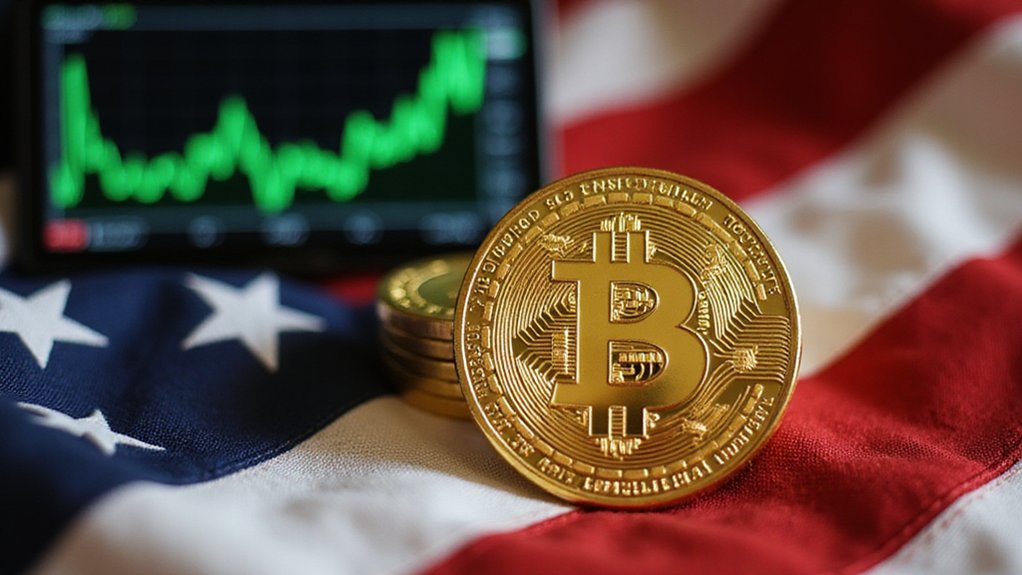A Web3 wallet functions as your digital passport to the blockchain world—simultaneously securing your crypto assets and enabling participation in decentralized finance. Unlike traditional banking’s third-party controlled accounts, these non-custodial tools employ cryptographic keys that grant users sovereign control over their digital holdings. Beyond mere storage, Web3 wallets facilitate staking, governance voting, NFT purchases, and multi-chain transactions—essentially serving as command centers for traversing the increasingly complex decentralized ecosystem. The uninitiated might find the responsibility overwhelming, but financial sovereignty rarely comes without its complexities.

Where traditional banking requires a physical card and identification to access funds, the Web3 ecosystem operates by fundamentally different rules.
A Web3 wallet—the digital equivalent of a combination safe, passport, and concierge service—functions as the essential gateway to decentralized finance and blockchain applications.
Your Web3 wallet—digital sovereign territory where financial autonomy meets cryptographic elegance—unlocks the borderless realm of decentralized possibilities.
Unlike conventional financial tools tethered to centralized institutions, these non-custodial interfaces employ public-private key cryptography to grant users sovereign control over their digital assets (a remarkable departure from banking norms where one’s funds exist primarily as numerical promises in a third party’s database).
The architecture of these digital instruments elegantly solves the authentication problem through cryptographic signing rather than identity verification.
Each wallet generates a unique address—functioning effectively as one’s blockchain “account number”—while the corresponding private key, secured via encrypted storage and recoverable through a seed phrase, authorizes transactions across multiple networks.
The multi-chain compatibility these wallets now offer (supporting Ethereum, Solana, Polygon, and numerous others) transforms a potentially fragmented ecosystem into a cohesive financial interface.
Beyond mere asset storage, modern Web3 wallets serve as operational hubs for an expanding universe of decentralized activities.
Users can stake cryptocurrencies for passive yield, participate in governance votes for decentralized autonomous organizations, purchase digital collectibles as NFTs, and execute complex DeFi strategies—all without relinquishing custody to intermediaries.
The evolution from early digital wallets focused solely on payment information to today’s comprehensive Web3 solutions demonstrates the remarkable shift toward user-controlled finance in the digital economy.
The integration of these wallets with browser extensions and mobile applications has dramatically reduced friction in blockchain interactions.
Security considerations, however, remain paramount.
The irreversible nature of blockchain transactions means that compromised private keys or forgotten seed phrases can result in permanent loss of assets.
Popular wallets like MetaMask require users to securely store their 12-word seed phrase which serves as the ultimate backup for wallet recovery.
Therefore, proper wallet management (including hardware options for significant holdings) constitutes a fundamental skill for Web3 participants.
Popular software wallet options like MetaMask, Coinbase Wallet, and Trust Wallet offer varying levels of convenience and security when interacting with decentralized applications.
For those exploring this rapidly evolving landscape, a properly secured wallet represents not merely a technological convenience but the foundational infrastructure for financial sovereignty in the digital age.
Frequently Asked Questions
How Secure Are Web3 Wallets Compared to Traditional Banking?
Web3 wallets offer enhanced security through decentralization, private key encryption, and biometric authentication, eliminating single points of failure that plague traditional banking.
While traditional banks rely on centralized security—often susceptible to large-scale breaches—they do provide regulatory compliance and insurance protection that crypto ecosystems currently lack.
Each system presents distinct vulnerabilities: smart contract exploits for Web3 and phishing susceptibility for traditional banking.
The security equation ultimately hinges on one’s comfort with self-custody versus institutional protection.
Can I Recover My Wallet if I Lose My Seed Phrase?
Recovering a wallet without a seed phrase is, to put it mildly, an exercise in futility.
While some platforms offer limited recovery options through additional verification steps, these are exceptions rather than rules.
The technological architecture of decentralized systems—intentionally designed with irreversibility as a feature, not a bug—essentially renders lost seed phrases permanent casualties.
Prevention remains the only reliable strategy; multiple secure backups (both physical and digital) serve as the sole insurance policy against crypto oblivion.
Do Web3 Wallets Work With All Cryptocurrencies?
No, Web3 wallets don’t universally support all cryptocurrencies.
Their compatibility hinges on blockchain-native architecture—MetaMask excels with Ethereum but falters with Solana.
Multi-chain wallets like Trust Wallet offer broader coverage, though limitations persist through chain-specific restrictions and token standard requirements.
The cryptocurrency universe, fragmented by design, necessitates either specialized wallets for particular ecosystems or aggregator solutions that bridge these technological archipelagos.
Hardware wallets, meanwhile, often lag in supporting emergent layer-2 tokens.
Are There Fees Associated With Using Web3 Wallets?
Web3 wallets themselves generally don’t impose platform fees, but users inevitably encounter blockchain network fees (gas) when executing transactions.
These vary wildly based on network congestion and complexity—Ethereum’s notorious fee spikes make a simple NFT purchase feel like luxury shopping, while Layer 2 solutions offer relative bargains.
Additional costs lurk in token approvals, failed transactions, and third-party integrations.
The decentralization premium, as it were, comes built into the experience.
Can Web3 Wallets Be Integrated With Traditional Financial Services?
Web3 wallets increasingly offer integration with traditional financial services through hybrid models that bridge decentralized and centralized ecosystems.
Financial institutions are exploring these connections to provide seamless asset management across platforms.
Such integrations enable users to manage both crypto and fiat currencies within unified interfaces, while blockchain-based transactions reduce cross-border fees and processing times.
As interoperability protocols mature, the line between Web3 and legacy systems continues to blur—particularly as CBDCs enter development pipelines worldwide.









